Badges of office shine bright at the Guardians AGM
Published: 9th November 2020

On Friday 16th October 2020 the Annual General Meeting of the Guardians of the Standard of Wrought Plate within the Town of Sheffield was held by Zoom. Behind the scenes at the Office the usual grandeur and traditional protocol remained, although significantly smaller in scale due to the Coronavirus (COVID 19) pandemic. A select number of the Executive Committee and Guardians met in the boardroom for the two way meeting.
Ordinarily at such meetings, items from the collection are retrieved from the store. These include the gavel designed and made by Wren Craftsmen in Oak, Thomas A. Rennocks and accompanies the wonderful oak panelling that adorns the Effingham Suite at Guardians’ Hall, Beulah Road, Hillsborough. Originally the oak panelling designed and made by Wren Craftsmen of Oak adorned the 1986 Goldsmiths’ Wing of the Sheffield Assay Office on Portobello Road. The panelling was carefully removed and transferred to Hillsborough in 2008. The panels line the walls of the Effingham Suite and list the Chairmen, Law Clerks and Assay Masters since 1773, with additional panels bearing hallmarks of the four UK Assay Offices, date letters and convention marks of other European Assay Offices.
.jpg)
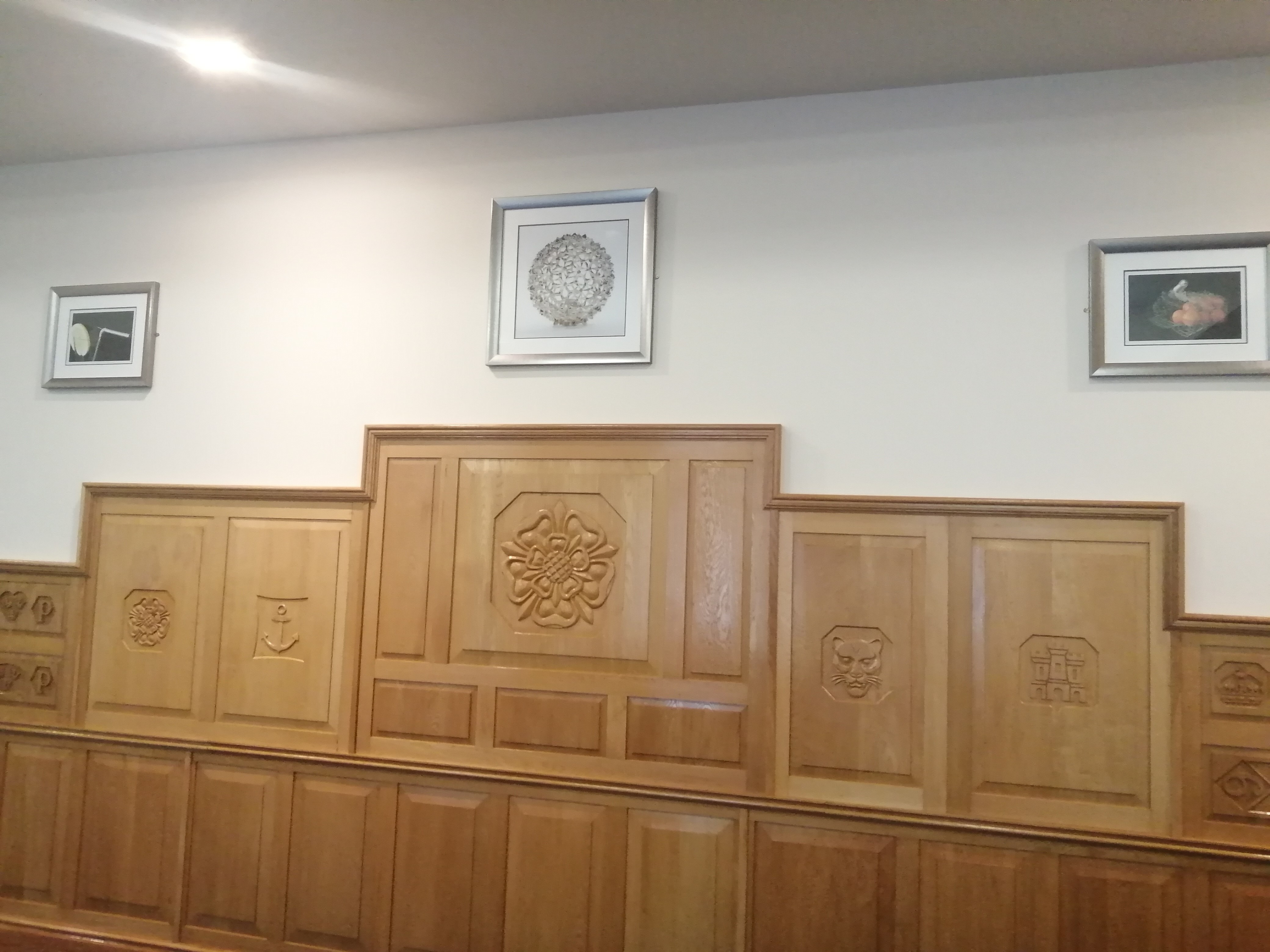
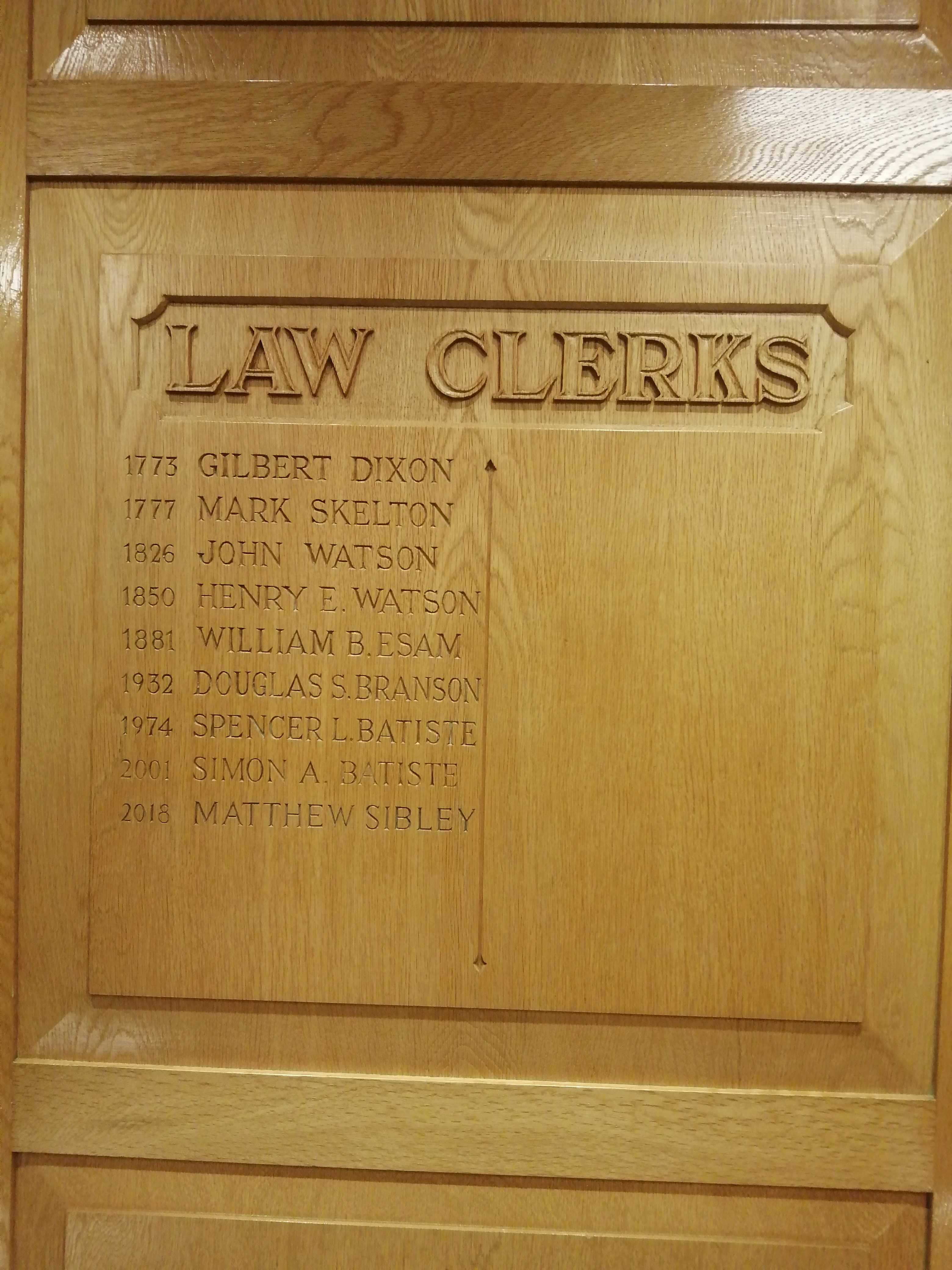
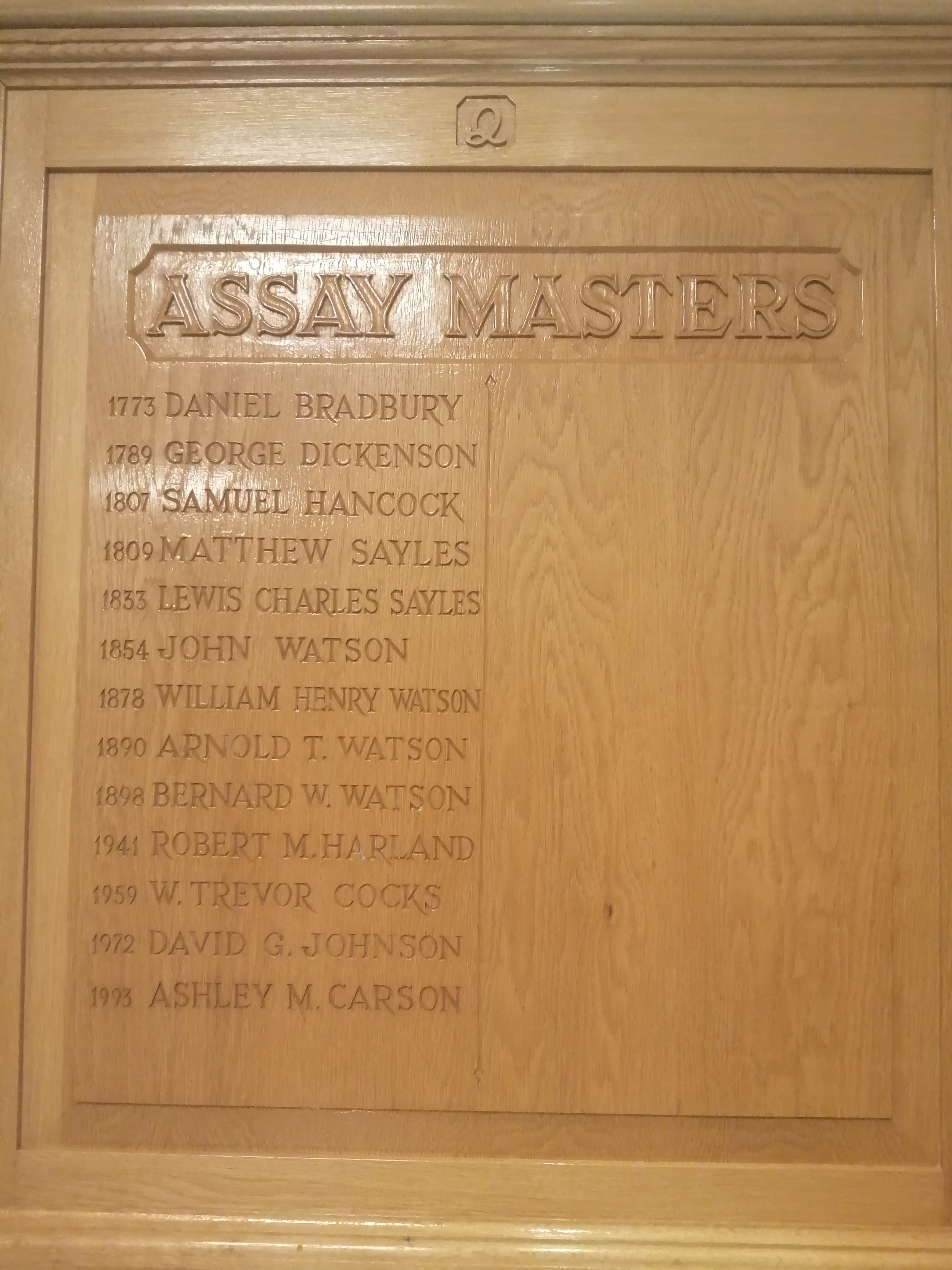
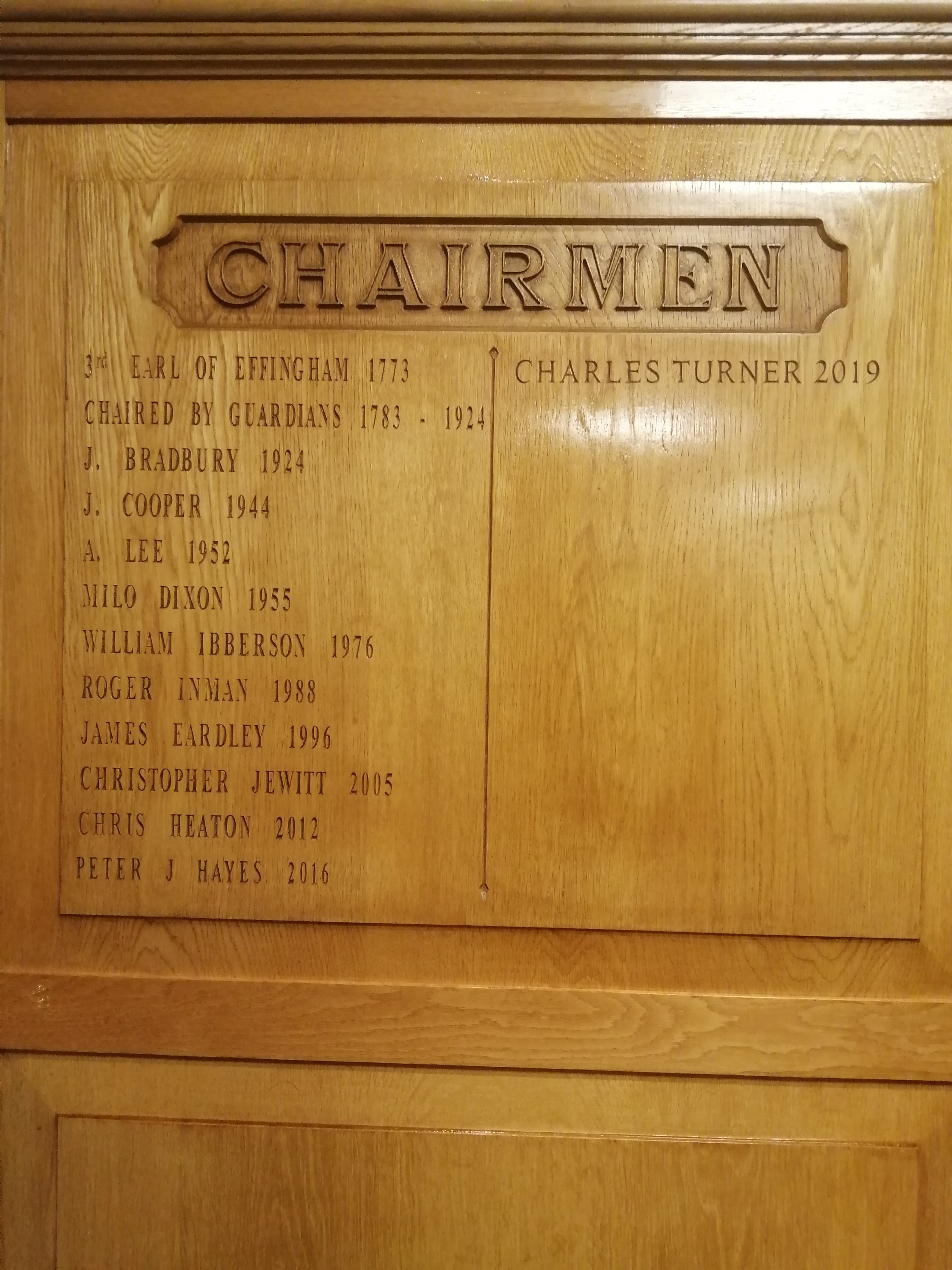
The backdrop is suitably impressive and is always admired by visitors to the Sheffield Assay Office, but what also makes the meeting special is that the Chairman, Charles Turner, Law Clerk, Matthew Sibley and Assay Master, Ashley Carson wear their badges of office. These along with the panelling and the gavel form part of the Sheffield Assay Office collection. The badges are rarely seen close up, so here is a little detail and information about their design and manufacture.
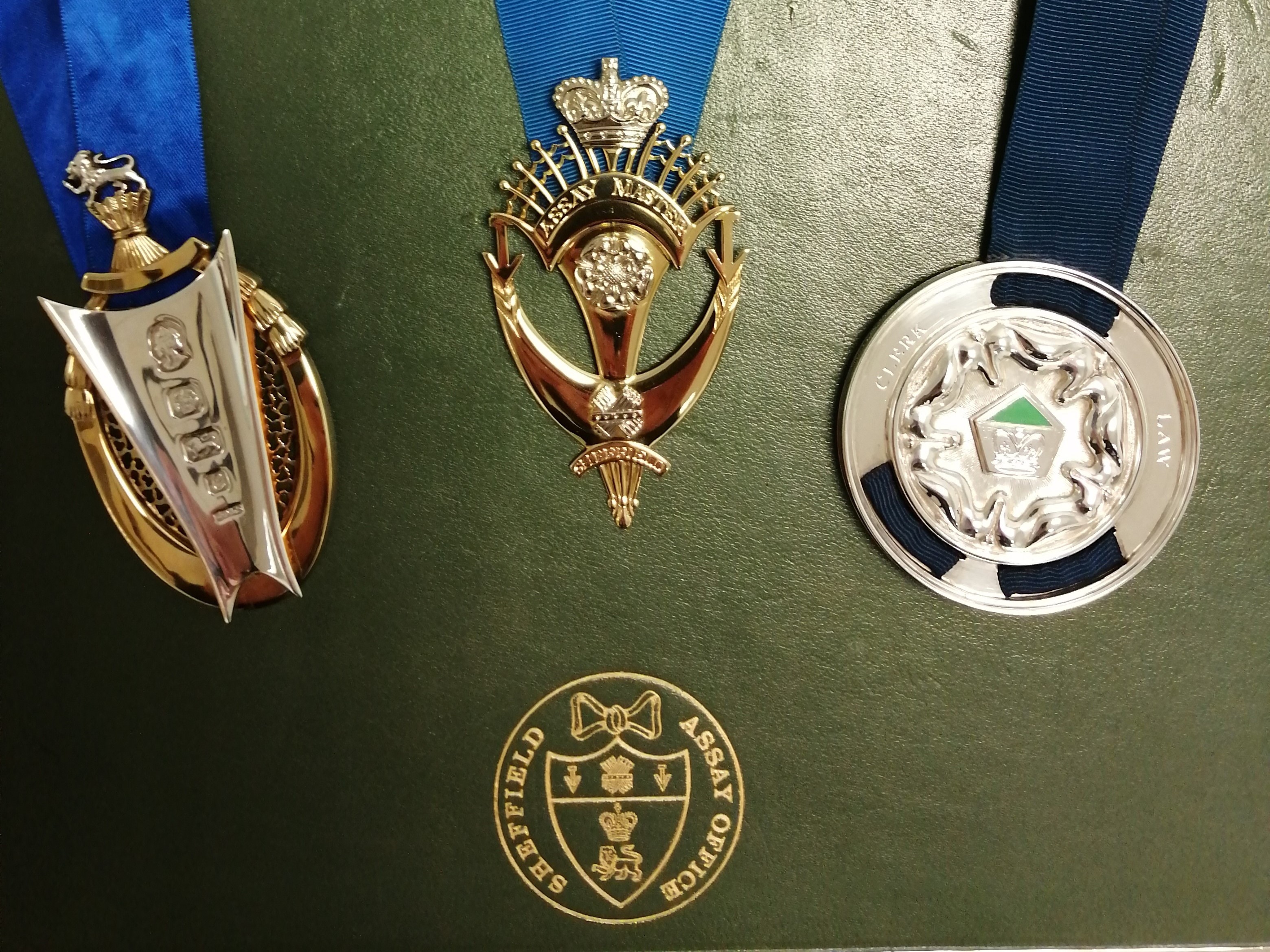
Left to right: Chairman’s, Assay Master’s and Law Clerk’s badge of office.
Chairman’s badge of office
This badge was designed by Charles Holliday and made by James Dixon and Sons, Sheffield. It consists of a pierced oval, top flanked with tassels on which a wheat sheaf and lion stand all in gilt. The central panel has been applied to the oval, and stamped with hallmarks vertically.
The hallmarks in order are the Head of Queen Elizabeth II, this was used on silver assayed in 1977, to commemorate the 25th Anniversary of Her Majesty’s accession. The Tudor rose, denotes the town mark for Sheffield Assay Office, the lion is the traditional fineness symbol for sterling silver (925 parts per 1000). And finally the date letter C = 1977.
The piece is engraved on the reverse with the following inscription; Presented to the Sheffield Assay Office by Sir Douglas Branson, Law Clerk from 1931 – 1974. Sir Branson was the 5th Law Clerk since 1773.
Despite the piece bearing the sponsors mark of James Dixon and Sons, it was a gentleman called Charles Holliday who designed it. Charles Holliday began work at James Dixon and Sons in 1927 after studying at the Sheffield College of Art. He became chief designer and worked at the firm for 50 years. His designs included sixteen Grand National trophies and the Blue Riband (Hales Trophy), awarded for the fastest sail crossing of the Atlantic. One of Holliday’s most impressive achievements is the 1961 Masters Golf Tournament trophy (replica of their Fort Augusta Clubhouse). He was quoted saying ‘no- body knows what hard work it is to come up with an idea. Perhaps doing the job is its own reward in some way. I always got a tremendous sense of fulfilment from creating a thing of beauty, something that will last forever. It was always a challenge and very satisfying to see it through…in the final analysis, a designer is only as good as the silversmiths and craftsman who take his drawing and produce the finished article. Between us we produce some great treasures’.
It was with skills of the silversmiths at James Dixon and Sons that the badge became reality. The firm was founded in 1806 by James Dixon. Originally they were Britannia metalsmiths, but in the 1820s branched out into making Old Sheffield Plate and silver goods, later also making electroplate. They were very much a family firm and employed over 1,000 workers when business was at its height in the early 20th century. Their works were at Cornish Place, Sheffield. They made a wide variety of goods, including cutlery. Like many other large Sheffield firms the firm got into difficulties in the 1970s. By 1976, Dixon’s were in receivership, work ceased at Cornish Place in 1992 and today James Dixon and Sons trade name is incorporated into British Silverware Limited, Sheffield who manufacture goods using the traditional designs and tooling.
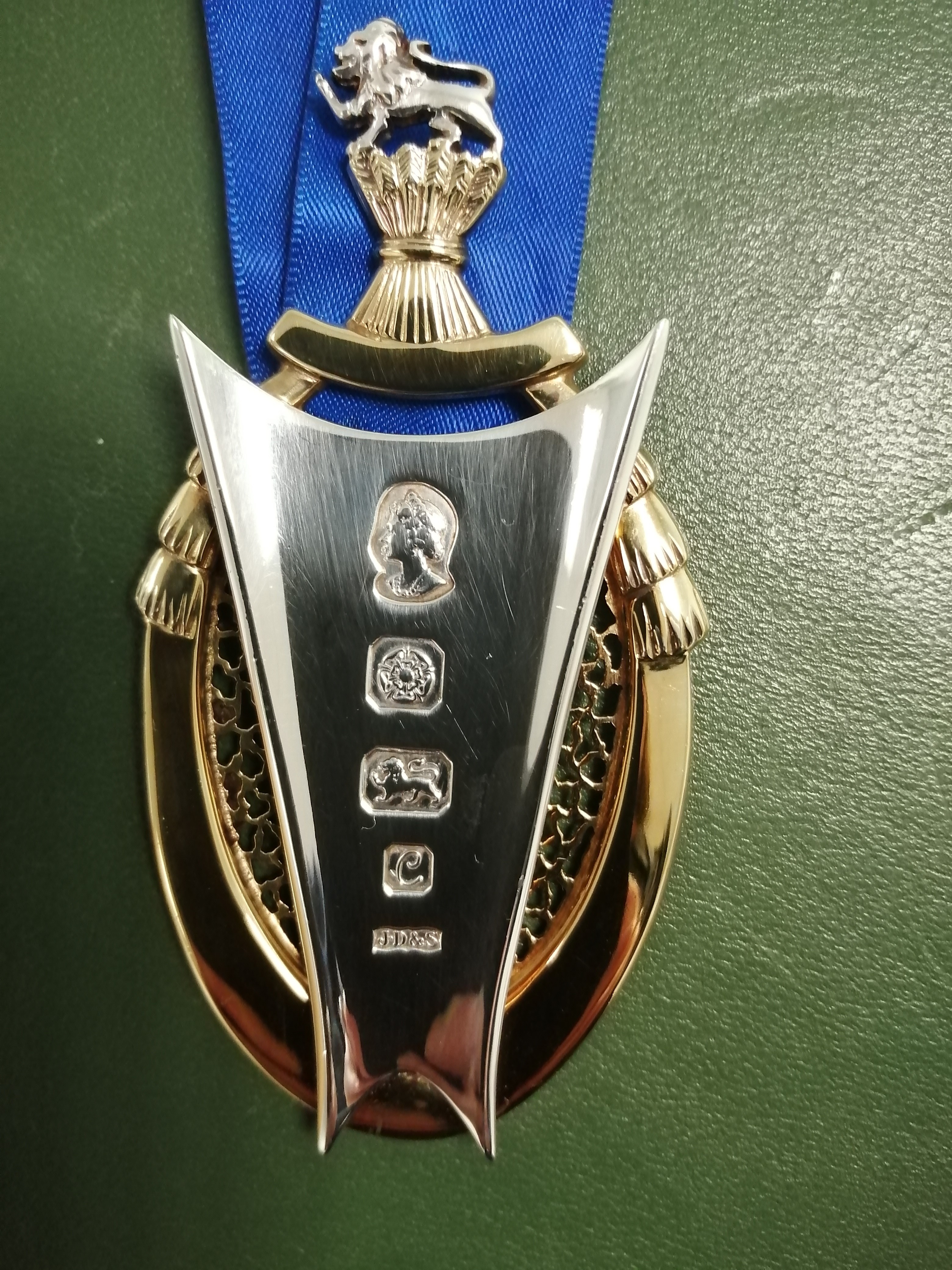
Assay Master’s badge of office
This badge was designed by Charles Holliday and made by Jack Spencer. It was assayed and hallmarked in 1983, made in 18 carat gold. The piece features a crown, a Tudor rose and crossed arrows, and engraved with the words Assay Master and Sheffield.
The sheaf of arrows is a play on words referring to the River Sheaf, which flows through the City of Sheffield. The river was given its name in the Anglo Saxon period when it acted as a division between the kingdoms of Mercia and Northumbria. The first time the sheaf of arrows appears as a symbol for Sheffield seems to be in the seal issued to the Church Burgesses by Queen Mary in 1554. Later, a similar image of the crossed arrows was used in the coat of arms granted to the Sheffield Borough in 1875, now the official coat of arms of the City of Sheffield. The silver arrows are also a reference to the city’s metalworking heritage, both in the manufacture of armour-piercing iron arrowheads in the Middle Ages for the wars with France, as well as the local silver industry which successfully petitioned Parliament for an Assay Office in 1773. The crossed arrows have been used for marking Old Sheffield Plate by some of Sheffield’s earliest silversmiths since the early 19th century.
With Charles Holliday’s design is was with the skill of the silversmiths and jewellers at Jack Spencer to make the design a reality. Jack Spencer was born in Sheffield during the 1930s. At the age of eleven, he gained a place at Sheffield School of Art. He began an apprenticeship with the renowned firm Walker & Hall at the age of fifteen. After completing his national service, Jack returned to Walker & Hall, working on product development and the manufacture of prototype products.
Jack Spencer left Walker & Hall to work with David Mellor, producing prototype cutlery and flatware designs. In 1966 he formed a creative partnership with another Sheffield craftsman, Keith Tyssen. In the two years that they worked together, commissions included silver flatware and cutlery for Barclays Bank and altar pieces for Churchill College, Cambridge.
Spencer then formed his business, Jack Spencer (Silversmith) Ltd, specialising in making modern, superbly crafted but affordable jewellery. The firm is now named Jack Spencer (Goldsmiths) Ltd and is part of British Silverware Ltd, Sheffield.
Assay Master, Ashley Carson said ‘It is a beautiful badge and I have been very proud to be able to wear it when representing the office. I remember sampling and hallmarking Jack Spencer’s work when I was a young member of staff in the Silver Marking Department. They always liked large feature hallmarks on their cufflinks’.
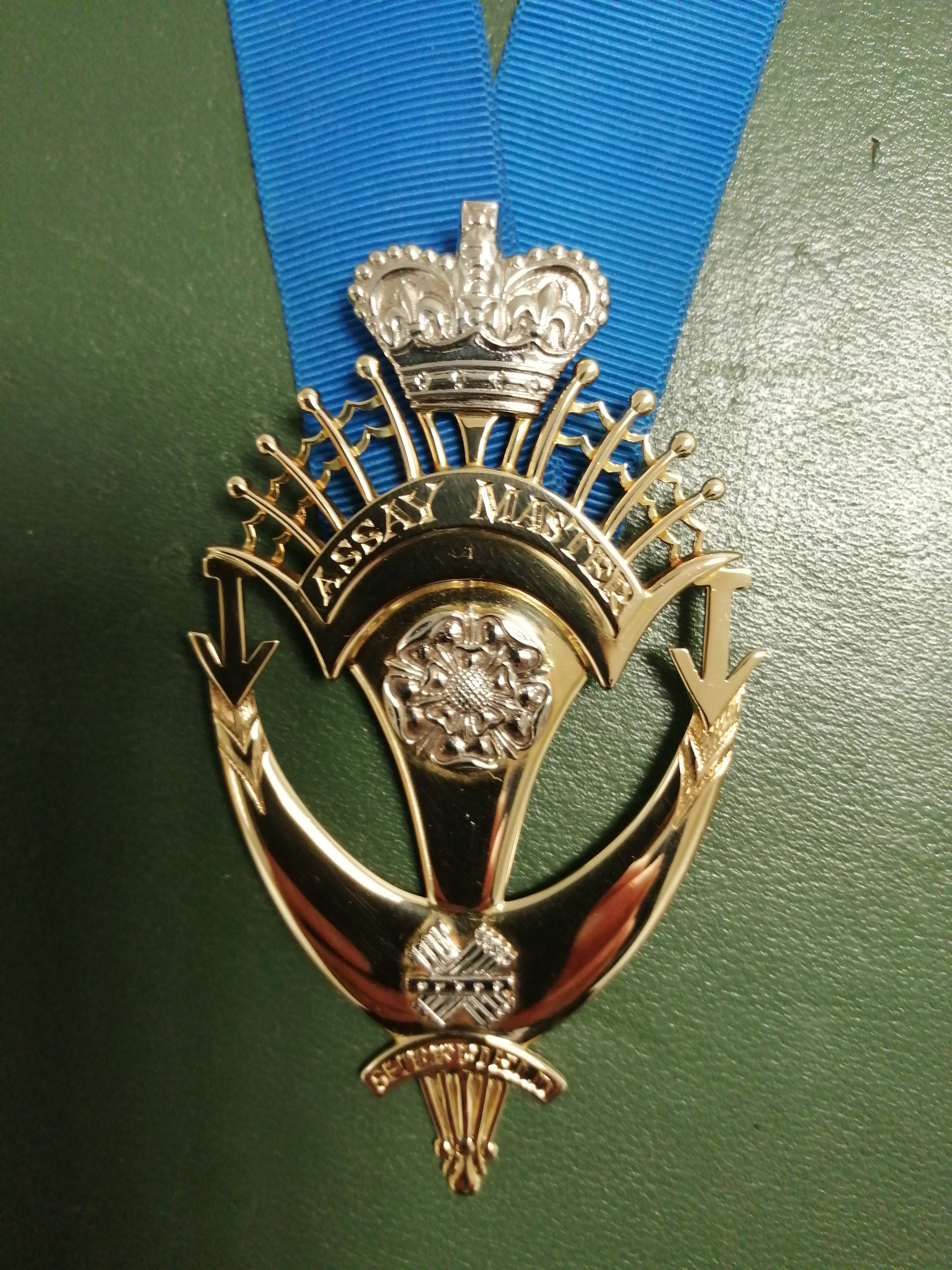
Law Clerk’s badge of office
This badge was designed and made by Julia M. Shaw, and is made in sterling silver. It comprises of a disc through which three blue tapes fold over the outer rim, the centre of the badge is a rose, in the middle of which a pentagon is engraved with a crown surmounted with a green enamel triangle. The front of the badge is engraved Law Clerk and the reverse; From Jean Dodworth, In memory of her husband John, Guardian 1964 -77.
The badge is clearly hallmarked on the reverse with Julia’s sponsors mark JMS, the Rose, the town mark for Sheffield, a lion, the traditional fineness symbol for sterling silver (925 parts per 1000), and date letter D = 1978.
Julia completed an Art Foundation course at Barnsley College and at the time was already a registered customer of the Sheffield Assay Office. She went on to study at Sheffield Polytechnic within the Faculty of Art and Design at Psalter Lane, she successfully gained a BA Honours in 3 Dimensional Design, specialising in Silversmithing and Jewellery.
In the second year of her course a competition was run for her year group to design a badge of office for the Law Clerk of the Sheffield Assay Office. Mrs Jean Dodworth had kindly donated the money for such a badge to be made in memory of her husband John Dodworth a Guardian of the Sheffield Assay office from 1964 – 1977. Mrs Dodworth judged the entries and Julia remembers her visiting Psalter Lane.
Julia Shaw said ‘I was most surprised to have won the competition, it was lovely to win and a great opportunity’. She recalls that she required the assistance of her tutors and a number of technicians from the department to make the piece. At the time Keith Tyssen was Head of Department and namely David Eagleton and Ian Rogers, assisted her with the making. Julia said ‘the piece involved me learning a range of new techniques, many technical aspects had to be resolved, one being how to attach the front to the back of the badge. The rose design was modified on the comments received from Mrs Dodworth, she said she would like a traditional Tudor rose’. Julia accommodated these changes in the design and particularly enjoyed the chasing element. Further assistance was obtained on the enamelling and the engraving was outsourced, to a hand engraver in the city as it is a very skilled job. Julia said ‘having completed the piece and being proud of my achievement, she remembered the day when she delivered the badge to Spencer Batiste’, the Law Clerk, 1974 – 2001. She commented that ‘It was great to have such a piece feature within her portfolio of work for her final year degree show’. Today Julia and her husband run a family jewellery firm, William & Julia Shaw Ltd, in Dodworth near Barnsley and we are pleased to say that Julia is still registered with the Sheffield Assay Office.
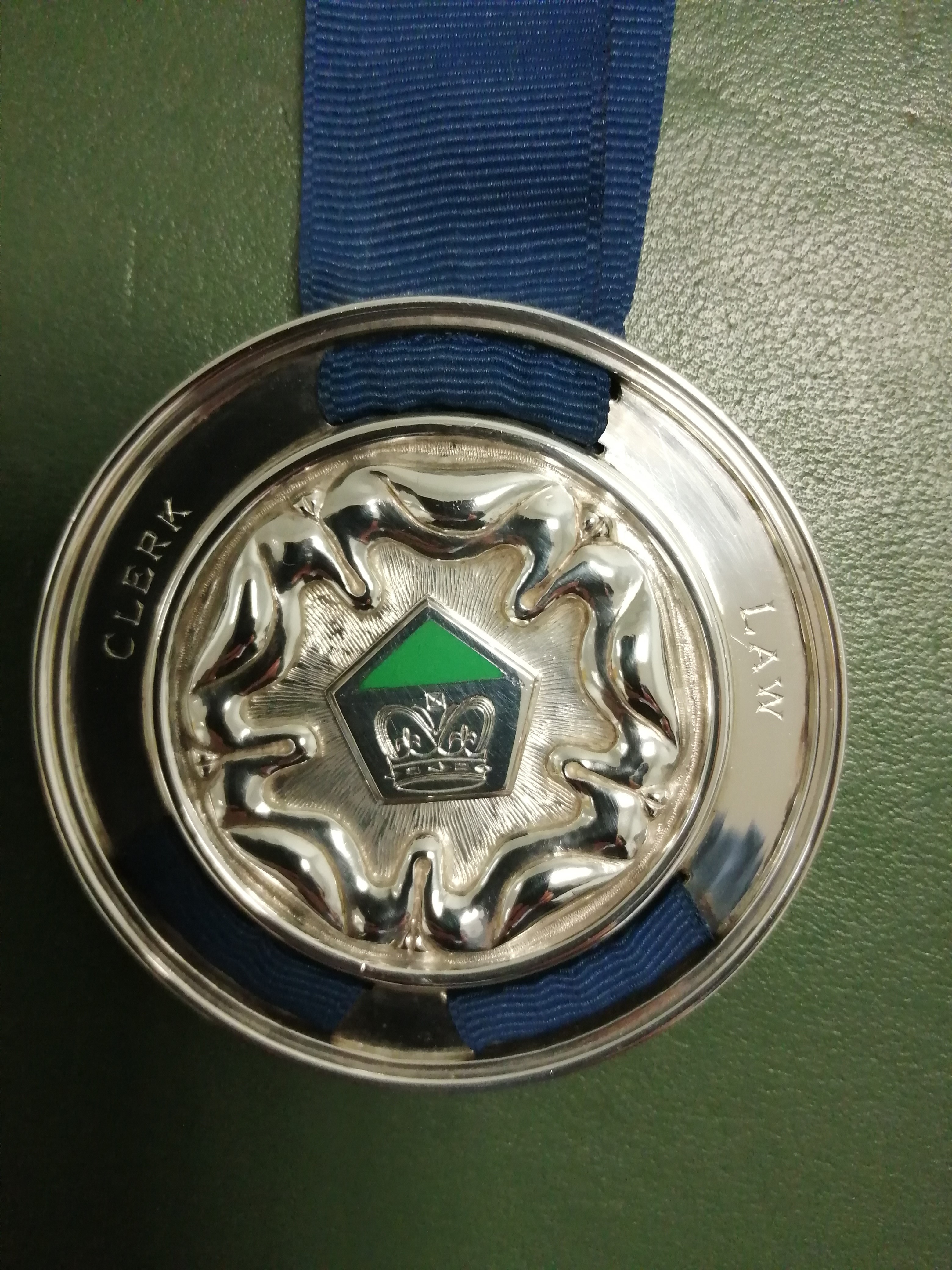
The Sheffield Assay Office was established in 1773, under an Act of Parliament and today the company assays and hallmarks the precious metals - silver, gold, platinum and palladium. Sheffield Assay Office is one of only four UK assay offices who all work to uphold the Hallmarking Act of 1973 and continue to ensure consumer protection for customers purchasing precious metals.
To find out more about the whole range of services offered by Sheffield Assay Office, such as our hallmarking and analytical services, please email us at info@assayoffice.co.uk or complete the contact form on our website at http://www.assayoffice.co.uk/contact-us ,
Sign up here to all the latest news from Sheffield Assay Office direct to your inbox